|
Family of Man
At the start of the ZetaTalk saga in 1995 the Zetas were asked
to describe the emergence of man, the family tree, and the
origin of the many races of man on Earth today. The list the
Zetas presented was longer than what human anthropologists
assume, as the Zetas included a genetically engineered race that
quickly died out (Angola Man), and pronounced that the American
Indian was a transplant from another world. Where everyone
seemed to agree that White Man (Caucasian), Black Man
(Negroid), and China Man (Mongolian) were separate races, they
were unsure what to do with Indonesia Man (Aboriginal, Malay,
Australoid) or the American Indian. Gypsy Man, the brown skinned
residents of India and Arabia, is ignored by human
anthropologists.
ZetaTalk Overview
7/15/1995: Angola
Man was not black at all, but pale to the point of being
bluish. Indonesian Man was short and stocky, with a rounded
belly. Gypsy Man was slight, and slid from confrontation, a
factor of his hominoid genetics as well as the root ape, which
took to the trees to escape and confronted only when escape
was not possible. White Man evolved in the desserts of Africa,
and migrated across the Mediterranean, which in those days was
not the water barrier it is today. The particular hominoid
stock forming Black Man emerged from a portion of the Family
of Man that relied on physical skills and social harmony. The
hominoid stock used to build China Man was from those least
likely to be impulsive, where deliberation brought rewards and
had thus been selected for survival during evolution.
ZetaTalk Overview
6/15/1996: The
American Indian bears the marks of shared genetics with Asians
that crossed the land bridge to Alaska, but the root race was
much older and unique to the Americas. Unlike the six races of
man, who were formed by genetically engineering an ape of
Earth, the American Indian was a transplanted hominoid who
arrived far earlier. Why have their bones not been found? What
is discovered from the prior race of transplanted hominoids is
not recognized for what it is. This race was slight in build,
and is taken for monkey bones when found.
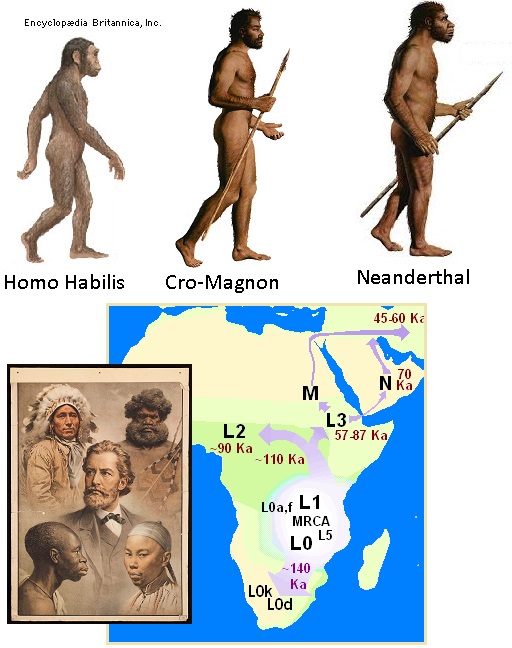
Human anthropologists also cling to the “out of Africa”
assumption, based in part on a common mitochondria found among
humans of all races on Earth, thus the Mitochondrial Eve theory.
This theory does not consider that the common mitochondria might
have been in the test tubes used by the genetic engineers, who
had a hand in the development of all the races of man from
various base apes.
- Mitochondrial Eve
https://en.wikipedia.org/wiki/Mitochondrial_Eve
- In human genetics, Mitochondrial
Eve is the matrilineal most recent common ancestor (MRCA),
in a direct, unbroken, maternal line, of all currently
living humans, who is estimated to have lived
approximately 100,000–200,000 years ago.
The “out of Africa” theory stumbled on several fronts. For
one, how did White Man emerge? Bathing in bleach? For another,
the heavy lids of China Man are nowhere in evidence in Africa.
But the lack of evidence from any location except Africa was
used religiously to support the “out of Africa” theory. Until
very recently, that is. Homo Habilis, assumed to have
never left Africa, was found in a Himalaya cave in June, 2014.
This was covered in Issue 406 of
this newsletter, and the Zetas explained.
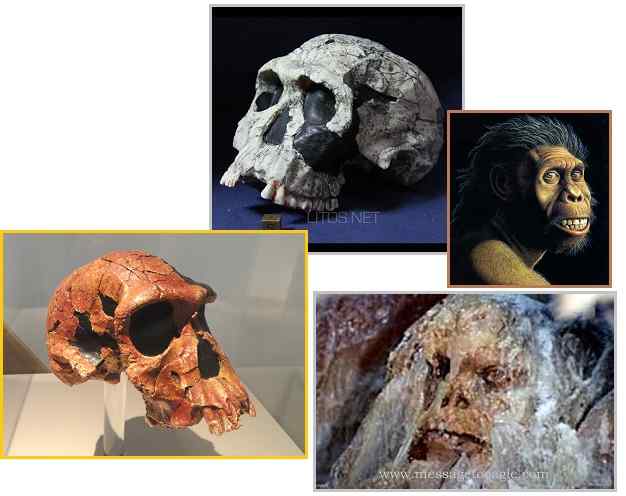
- Startling Discovery of Frozen Caveman
in Himalayan Mountain
June 14, 2014
http://www.messagetoeagle.com/frozencavemanhimalayanmountains.php
- Primary analysis of the skeleton
reveal the bones belong to an adult male Homo Habilis,
which is believed to have lived from approximately 2.33 to
1.44 million years ago. This opens a whole new
interpretation of generally accepted views of the
colonization of the planet by the human species. According
to most widely accepted theories on the subject, Homo
Habilis isn't normally believed to have traveled this far
from Africa and lived in such hostile climates.
ZetaTalk Explanation
6/21/2014: The
issue here is not why the Himalayas would have caves that
contain evidence of life from warmer climes or lower
elevations, but that Homo Habilis was found outside of Africa,
countering the going theory that this version of early man was
only in residence in Africa. Speculation on mankind’s origins
are so wrong as to be almost comical, based on spotty data and
full of denial on the absolute evidence of genetic engineering
done by aliens. Early man roamed to Australia, due to land
bridges present in the past, and throughout China and Russia.
Indonesia Man
And what to make of the Flores Hobbit, whose skeletal remains
did not fit any of the early man types discovered in Africa. The
Zetas described Indonesia Man as having a dominant forehead,
such that it formed shade for his eyes. This was certainly not
in the African ancestors. But it does show up in the modern day
Aboriginals and in the 2004 discovery of the Flores Hobbit. Dare
I say Zetas Right Again?
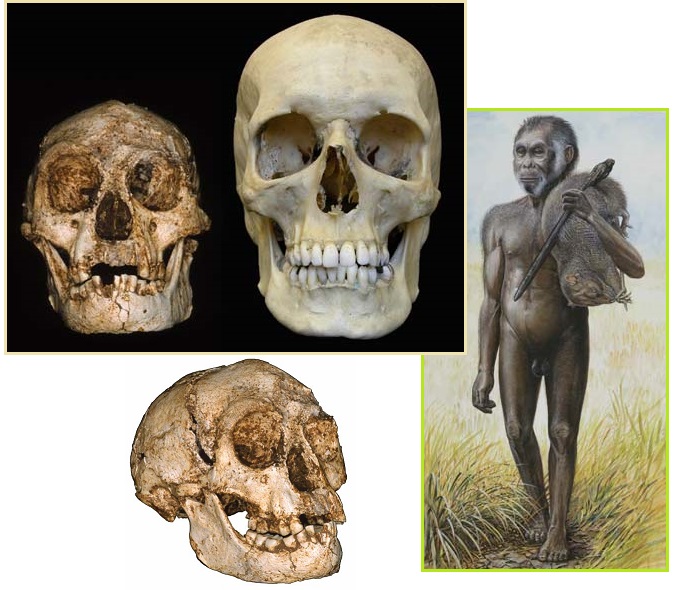
- Hobbit-Like Human Ancestor Found in
Asia
October 27, 2004
http://news.nationalgeographic.com/news/2004/10/1027_041027_homo_floresiensis
- Australian and Indonesian
researchers discovered bones of the miniature humans in a
cave on Flores, an island east of Bali and midway between
Asia and Australia. They had slightly longer arms than us.
More conspicuously, they had hard, thicker eyebrow ridges
than us, a sharply sloping forehead, and no chin.
- Scientists find Prehistoric Dwarf
Remains
October 27, 2004
http://usatoday30.usatoday.com/tech/science/discoveries/2004-10-27-cavedwarf
- This much is clear: Its worn
teeth and fused skull show it was an adult. The shape of
the pelvis is female. The skull is wide like H. erectus.
But the sides are rounder and the crown traces an arc from
ear to ear. The skull of H. erectus has straight sides and
a pointed crown. The lower jaw contains large, blunt teeth
and roots like Australopithecus, a prehuman ancestor in
Africa more than 3 million years ago. The front teeth are
smaller and more like modern human teeth. The eye sockets
are big and round, but unlike other members of the Homo
genus, it has hardly any chin or browline. The rest of the
skeleton looks as if it walked upright, but the pelvis and
the shinbone have primitive, even apelike features.
The Flores Hobbit is clearly Indonesia Man, though the
Australian Aboriginals also appear to have the Black Man genes
described by the Zetas. The Aboriginals also have the rounded
belly included in the Zeta description for Indonesia Man.
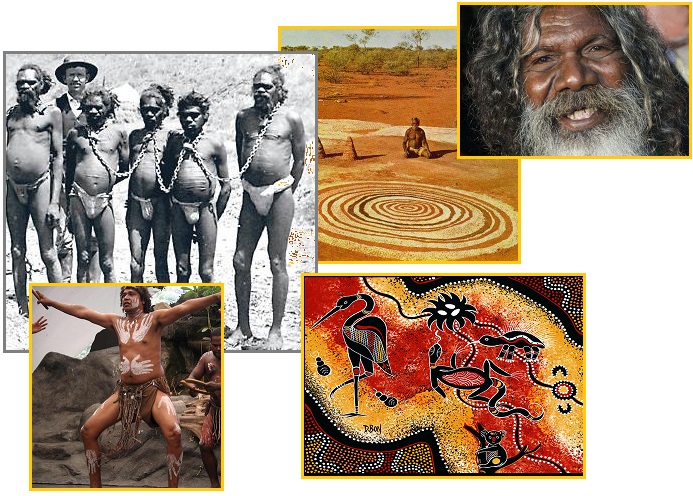
ZetaTalk Overview
7/15/1995: Indonesian
Man in the pure form also died out, but through casual
encounters with Gypsy Man merged into what we will call
Polynesian Man. The Australian Aborigines also can point to
Indonesian Man for a large portion of their genetic heritage,
being, like the new Polynesian Man, a combination of Gypsy Man
and Indonesian Man, with the addition of some Black Man genes
due to a highly promiscuous Black Man who traveled with a
small band to that part of the world. As an oddity, and tall
in stature compared to their tallest warrior, he was treated
as a god and given all the women they could muster. He
considered this a pleasant retirement. Indonesian Man was
short and stocky, with a rounded belly. He had a dominant
forehead which protruded out over his eye sockets, giving him
the natural equivalent of shades. He was not swift, but moved
in a ponderous manner, and thus his demise. He could not run
for safety or rescue others quickly, and his lack of agility
and rounded shape prevented him from taking to the trees or
cliffs for safety. Indonesian Man had what we might describe
as a stubborn rage that when lit would not soon quell. Where
he stood to fight, and won some, he was invariably bested by
large predators. He too was eaten, irregularly, until gone.
China Man
Then there was the stunning discovery of the bones of early
China Man in 2012. These showed no evidence of having emerged
from Africa, which would not surprise anyone who had noted that
the races of man all look so very different from one another.
The Zetas had explained that China Man, as the other races, had
a different base ape, and were happy to point out that China Man
had been engineered from the Orangutan who are, as one will
note, from Asia, not
from Africa. So much for the “out of Africa” theory. This was
covered in Issue 408 of this
newsletter where the Zetas once again explained. Let me point
out that the discovery that early China Man had the Orangutan as
the base ape means Zetas Right Again!
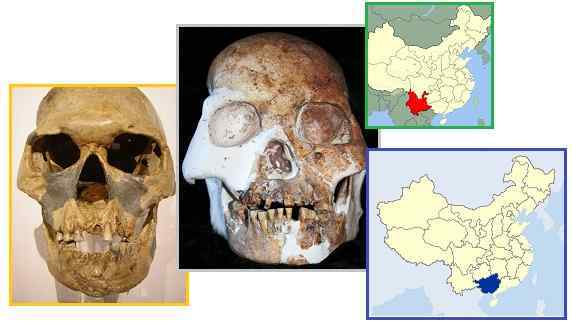
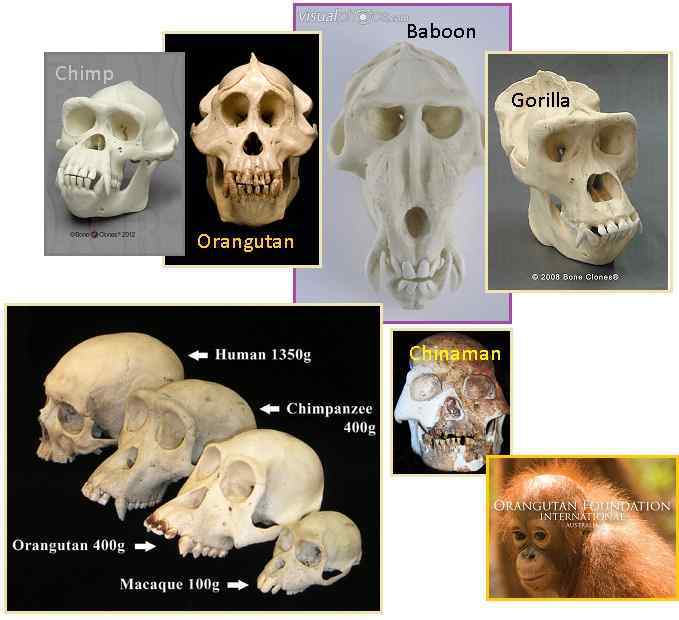
- Red Deer People of Sundaland
March 14, 2012
http://www.guardian.co.uk/science/2012/mar/14/red-deer-cave-people-species
- One partial skeleton, with much
of the skull and teeth, and some rib and limb bones, was
recovered from Longlin cave in Guangxi province. More than
30 bones, including at least three partial skulls, two
lower jaws and some teeth, ribs and limb fragments, were
unearthed at nearby Maludong, or Red Deer Cave, near the
city of Mengzi in Yunnan province. The discovery of the
Red Deer Cave people shows just how complicated and
interesting human evolutionary history was in Asia right
at the end of the ice age. We had multiple populations
living in the area, probably representing different
evolutionary lines: the Red Deer Cave people on the East
Asian continent, Homo floresiensis, or the 'Hobbit', on
the island of Flores in Indonesia, and modern humans
widely dispersed from northeast Asia to Australia. This
paints an amazing picture of diversity, one we had no clue
about until this last decade.
ZetaTalk Insight
7/12/2014: Was
the Red Deer Caveman essentially early Chinaman? We stated
that the six races of man all had a different base ape, though
most of these base apes have morphed or died out over time.
But in looking at the distinctive flange on the cheekbones of
the Red Deer Cave hominoid, one can only see one candidate
that would apply as the base ape for Chinaman. The Chimp has
these flanges but evolved in Africa, and is too belligerant.
Likewise the Baboon. The Gorilla has a placid temperament but
does not have the flanges. But look at the Orangutan, an ape
from southeast Asia, with distinctive flanges, a broad jaw,
intelligence, and a placid nature!
Neanderthal Man
Neanderthal Man’s history and legacy demonstrate that man has
been genetically engineered. Man is presumed to have evolved
from apes. But why then do some people have Rh negative
antibodies, lacking the Rhesus factors common to all apes?
Analysis of the DNA taken from Neanderthal bones found in caves
in Europe show that the human blood factors A, B, and Rh
positive are utterly lacking in the Neanderthal. Neanderthal man
had blood group O, exclusively. In Issue
284 of this newsletter we detail how the range of
Neanderthal, who interbred with other versions of Early Man, has
affected the genetics of humans still living in those regions.
The Basque people in Europe have the highest percentage of blood
group O (55%), and the highest percentage of Rh negative blood
(33%) in the world. They have Neanderthal blood! Neanderthal’s
blood type certainly disproves the “out of Africa” theory.
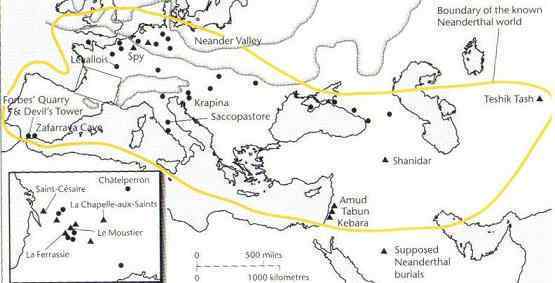
- How the Neanderthals became the
Basques
August 26, 2002
http://www.aoi.com.au/bcw/neanderbasque.htm
- This research included studies of
DNA extracted from bones of Neanderthal remains. It was
concluded that Neanderthals were probably a fully separate
species from modern humans, not just a subspecies. Looking
now at the evidence for the theory that the Basques are
descended principally from Neanderthals. The Basques are
well-known to have the highest percentage (around 33%) of
Rhesus-negative blood of any human population, and so are
regarded as the original source of this factor. Around
600,000 years ago, in southern Europe, a species of man
separated off from the ancestral line, and we call this
species Homo neanderthalensis, the 'N-people'. The blood
of this species contained none of the factors A, B, or Rh.
Much later, possibly around 200,000 years ago in Africa,
the main human line had picked up the A, B, and Rh
factors, and by then could be classed as Homo sapiens, the
'S-people'.
Much speculation abounds about why Neanderthal disappeared. At
the start of the ZetaTalk saga in 1995 the Zetas stated that he
was phased out as a genetic engineering experiment, as he could
not digest the food stuffs available to him.
ZetaTalk Description
7/15/1995: Archeologists
discover bones, such as those of Neanderthal Man, and wonder
what became of him. Did he die out? Did he evolve? It seems he
rather abruptly disappeared, and such a strapping fellow, he
was! Neanderthal Man was taken in hand to correct a problem.
All of him? Yes. This was affected by making him sterile, a
simple snip to the male, where he roamed free, and genetically
engineering those taken into the lab. So what were
Neanderthal's problems, and what did he become? Neanderthal,
big brute that he was, had a digestive problem. It is often
assumed that he died out because he was stupid, or
confrontational, but he was none of these and underwent change
only because he had tummy troubles. He was not living his full
life, and some died young, due to inability to digest the
foods available, to take advantage of the fauna and flora that
were perforce his menu. Coming out of his genetic correction,
and returned to his environs, he looked different - a bit like
Cro Magnon Man.
Years later, in the year 2000, scientists discovered that
indeed, Neanderthal could only digest meat.
Per the Zetas, this fits with the Neanderthal related humans of
today, who tend to have food allergies. What can I say but Zetas Right Again!
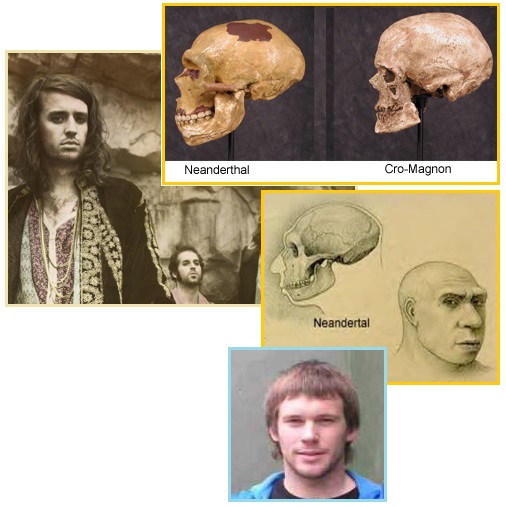
- Study Suggests Neanderthals ate Meat
and little Else
June 12, 2000
https://news.google.com/newspapers?nid=1914
- If a Neanderthal walked into a
hamburger joint today, he probably would order a double
burger. And hold the bun, the lettuce, tomato and onion. A
new study of 28,000-year-old Neanderthal bones suggests
the ancient hominid ate meat, lots of it, and very little
else. Studies of bones from the early modern humans in
Europe suggest they had a more varied diet, eating smaller
animals, such as rabbits, and lots of fish - up to 30
percent of their diet. But for the Neanderthal, it was
meat, meat and more meat. The researchers probed the diet
of the Neanderthal by measuring the isotopic ratios of
nitrogen in skulls and jawbones recovered from a cave in
Croatia.
ZetaTalk Explanation
3/3/2012: The
Basque people have a high percentage of Neanderthal genetics,
and thus a higher than usual percentage of Rh negative blood.
It has been identified in recent DNA analysis of Neanderthal
bone marrow that Neanderthal had no blood components for A, B,
or Rh, which came during later genetic engineering projects.
Thus their high percentage of Rh negative blood reactions. We
have mentioned that Neanderthal Man was stopped, his vas cut
and replaced by another genetic engineering product, as he had
problems digesting food native to the Earth. Recent analysis
of Neanderthal caves has confirmed that he had a meat diet,
almost exclusively, and the Basque people have a tendency to
have many food allergies.
Gypsy Man
Now we have yet another discovery, this one in S Africa,
proving the Zetas correct. In 2013 bones were discovered in a
cave near Johannesburg, but to the puzzlement of anthropologists
the bones did not match any
of the prior “out of Africa” variations of Early Man. Once
again, the Zetas explain. This is Gypsy Man, who made the leap
to India because India was snugged next to southeastern Africa
in those days. I can only say, Zetas
Right Again! Only the Zetas stated in 1995 that Gypsy
Man was a distinct race of man, and what his characteristics
were. Wow.
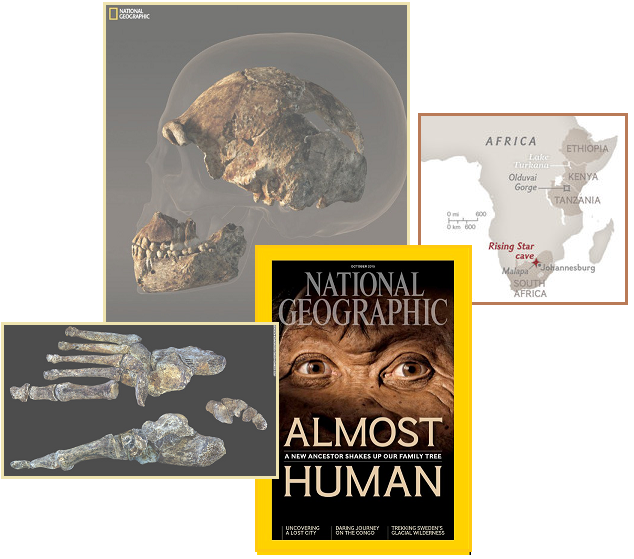
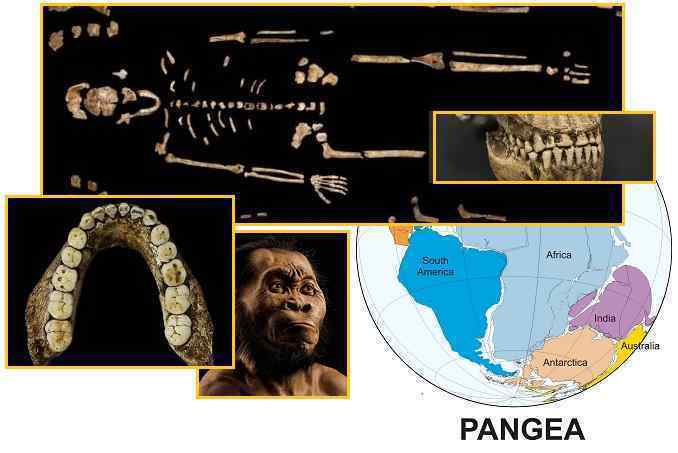
- 'Tiny Brain, Slender Body': New
Human-like Species Discovered in S. African Cave
September 10, 2015
http://www.rt.com/news/314925-species-human-cave-africa/
- Scientists in South Africa have
unearthed a new species of human relative in a burial
chamber deep down in a remote cave system. Paleontologists
have come to the conclusion that H. Naledi deliberately
deposited bodies of their dead in a remote cave chamber –
behavior previously thought limited exclusively to
humans. The research, published in the
journal Elife, shows that on average H. Naledi stood
approximately 150cm tall and weighed about 45kg. Its teeth
are described as similar to those of the earliest-known
members of our genus, such as Homo Hanilis, as are most
features of the skull. The shoulders, however, are more
similar to those of apes. Surprisingly, H. Naledi has
extremely curved fingers, more curved than almost any
other species of early hominin, which clearly demonstrates
climbing capabilities. Its feet and long legs suggest that
the species was well-suited for long-distance walking. The
creature, which evidently walked upright, represents a mix
of traits. For example, the hands and feet look like Homo,
but the shoulders and the small brain recall Homo's more
ape-like ancestors, the researchers said.
- Homo Naledi: New Species of Human
Ancestor Discovered in South Africa
September 10, 2015
http://www.cnn.com/2015/09/10/africa/homo-naledi-human-relative-species
- When an amateur caver and
university geologist arrived at Lee Berger's house one
night in late 2013 with a fragment of a fossil jawbone in
hand, they broke out the beers and called National
Geographic. Berger, a professor at the University of the
Witwatersrand in Johannesburg, South Africa, had unearthed
some major finds before. But he knew he had something big
on his hands. What he didn't know at the time is that it
would shake up our understanding of the progress of human
evolution and even pose new questions about our identity.
ZetaTalk Explanation
9/12/2015: Who
is this early man, so slender, a tree climber and
long-distance walker? Does this not sound like our 1995
description of Gypsy
Man, one of the 6
versions of Early Man genetically engineered for Earth? We
stated that Gypsy Man was slight, and took to the trees to
avoid confrontation. H. Naledi is described as having hands
that showed climbing capabilities. We described Gypsy Man has
having sharp,
prominent teeth, and
these are clearly what H. Naledi possessed. How did he get
from S Africa to India? Look at the map of Pangea! India was
snugged up against southern African, and H. Naledi was a
walker. Why was he found in a cave? He was
non-confrontational, and to evade large predators at night,
one hid in a cave with a tight opening!
Annunaki
Where the Annunaki did not evolve from apes on Earth, they are
close enough genetically to man to be able to interbreed, and
have left their mark among men. Legends of course abound from
the Gods of Mt. Olympus to the tales of Samson and David and
Goliath. Samson was Annunaki, as was Goliath. David, of the
David and Goliath tale, was a half breed.
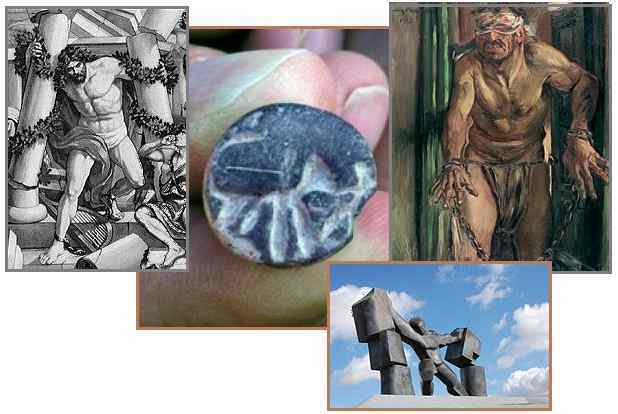
ZetaTalk Explanation
8/18/2012: Where
Samson is described as being of Hebrew stock, he was
not. Annunaki soldiers were stationed on Earth during
the long 3,600 year period between the periodic passages of
their home planet, and since they had a normal life span as do
humans, reproduction had to occur. Annunaki women were thus
stationed with the soldiers, to bear young. When one of them
died in childbirth, the child was unwanted by the father as
there had been a dispute over paternity, and the babe left to
die. Adopted by a Hebrew couple, who lied about his origin, he
had status in the community but was also highly resented
because of his size and strength and fierce determination.
Thus, he came under attack. The Samson saga is a true story,
although descriptions of his strength in some accounts are
exaggerated.
ZetaTalk Explanation
7/15/1995: Most
often, a female slave that had been impregnated would die in
childbirth, unable to deliver an oversized infant, taking her
infant with her. On rare occasions half-breeds survived, often
without their mothers who bled to death or were torn beyond
repair. David’s mother, like he, bore genes from a half-breed,
and thus had the hips to bear the product of rape and live.
Do they live among us today? Yes, as hybrids in Patagonia, a
very secretive tribe. And the 7 foot high Qiang People of China
show distinctive Annunaki characteristics, as detailed in Issue
389 of this newsletter.

ZetaTalk Comment
2/4/2012: Where
in one photo the head of the tall man dressed in white
appeared to be orange, this is due to the color of the
hybrid's skin, when tanned, not as brown as pure human skin.
When this hybrid cluster encountered European explorers, they
like the American Indians recognized a threat to their
existence, though at first they greeted the explorers and were
curious. They withdrew, and have kept themselves separate from
strictly human society to avoid hostile reactions.
|

